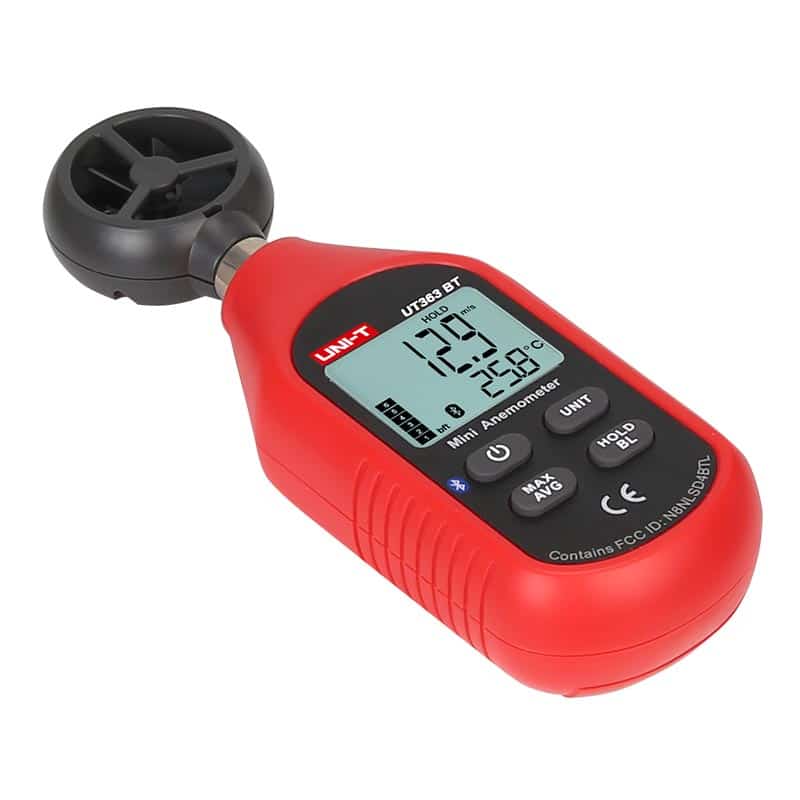Top Attributes to Try To Find in an Effective Anemometer for Accurate Wind Measurement
Top Attributes to Try To Find in an Effective Anemometer for Accurate Wind Measurement
Blog Article
Anemometers Unveiled: Comprehending Their Significance in Ecological Surveillance and Safety And Security Steps
The role of anemometers in environmental monitoring and precaution is often undervalued, yet their importance is indisputable. These tools have a lengthy history rooted in scientific questions and technical developments, progressing to come to be necessary tools in numerous areas. From weather forecasting to air travel safety and security, anemometers play a critical function in supplying accurate information that notifies decision-making procedures and boosts general safety and security. Comprehending the ins and outs of anemometers unveils a globe of vital understandings that are basic to our understanding of the environment and the procedures we take to make certain safety and security.
Background of Anemometers
The development of anemometers can be traced back to the old human beings where basic wind measuring tools were initial made use of. One of the earliest recognized anemometers was the hemispherical cup anemometer developed by Leon Battista Alberti in the 15th century.
In the 18th century, the prominent researcher John Thomas Romney Robinson introduced the Robinson anemometer, which included 4 hemispherical mugs mounted on straight arms that prolonged from a central axis. This design came to be a criterion in atmospheric measurements because of its precision and dependability. For many years, advancements in technology caused the development of more modern-day anemometers, consisting of ultrasonic anemometers and laser Doppler anemometers, supplying raised precision and efficiency in determining wind rate and direction. The background of anemometers showcases a remarkable journey of innovation and progress in the field of meteorology.
Kinds of Anemometers
Throughout the area of meteorology, different types of anemometers have been created to properly measure wind speed and instructions. Sonic anemometers make use of ultrasonic signals to measure wind rate and direction properly. Hot-wire anemometers operate based on the principle that the cooling result of wind on a warmed wire is proportional to the wind rate.
Applications in Weather Forecasting
Having actually talked about the numerous types of anemometers made use of in meteorology for measuring wind rate and instructions, it is important to discover their sensible applications in the area. Anemometers play an essential role in meteorology by supplying real-time and exact information on wind problems (anemometer). Meteorologists use anemometers to keep an eye on wind speed and direction to forecast weather condition patterns, issue warnings for severe weather condition occasions like hurricanes, twisters, and tornados, and analyze atmospheric conditions for air travel safety
In meteorology, anemometers assist in understanding local and regional wind patterns, which are web vital for forecasting weather adjustments and identifying weather trends. These devices are also utilized in study to examine microclimates, metropolitan warmth islands, and air pollution dispersion. Additionally, anemometers are employed in agriculture to enhance plant management methods, such as watering news and pesticide application, based upon wind problems.
Importance in Aviation Security
An integral facet of making certain aeronautics security hinges on the meticulous monitoring of wind problems utilizing anemometers. Anemometers play a critical duty in aeronautics by supplying real-time data on wind rate and instructions, assisting pilots in making notified decisions throughout trip, liftoff, and landing. Solid and unpredictable winds can significantly influence aircraft procedures, making it important for air travel authorities to count on accurate wind dimensions to make sure the safety and security of travelers and staff.

In the vibrant atmosphere of aeronautics, where also minor adjustments in wind speed and direction can have profound effects, anemometers stand as vital devices for promoting safe and secure flight.
Function in Environmental Study
Anemometers play a crucial function in ecological research by offering crucial information on wind rate and direction. By accurately measuring wind qualities, anemometers assist scientists analyze the motion of toxins in the air, analyze the impact of industrial emissions, and anticipate the spread of contaminants in the setting.


Final Thought
Finally, anemometers have played a critical duty in ecological tracking and precaution. With an abundant background and different types available, these tools have actually been widely utilized in meteorology, aeronautics safety and security, and ecological study. Understanding the value of anemometers is necessary for precisely determining wind rate and instructions, which is essential for forecasting climate patterns, making sure risk-free aviation operations, and performing environmental studies - anemometer. Their contributions to these areas can not be ignored.
One of the earliest recognized anemometers was the hemispherical mug anemometer developed by Leon Battista Alberti in the 15th century. Over the years, developments in innovation led to the development of even more contemporary anemometers, including ultrasonic anemometers and laser Doppler anemometers, offering raised precision and efficiency in measuring wind speed and instructions. Hot-wire anemometers operate based on the principle that the cooling effect of wind on a heated cord is proportional to the wind speed. Meteorologists make use of anemometers to check wind speed and instructions to forecast weather condition patterns, problem warnings for extreme weather condition occasions like storms, hurricanes, and tornadoes, and analyze atmospheric conditions for aviation safety and security.
Understanding the significance of anemometers is crucial for properly gauging wind rate and direction, which is important for forecasting weather patterns, guaranteeing safe air travel operations, and conducting ecological studies. (anemometer)
Report this page